Vampire Bat Facts for Kids | Appearance, Habitat, Behavior and Do They Really Drink Blood?
We’ve all seen Vampires in movies. They have fangs, suck blood, and can turn into bats to fly away into the night. But did you know there is an actual family of bats called Vampire Bats? Vampire Bats refer to species of bats in the family Desmodontinae. Like vampires, these bats also have sharp teeth and drink the blood of other animals to survive. Let’s find out more!
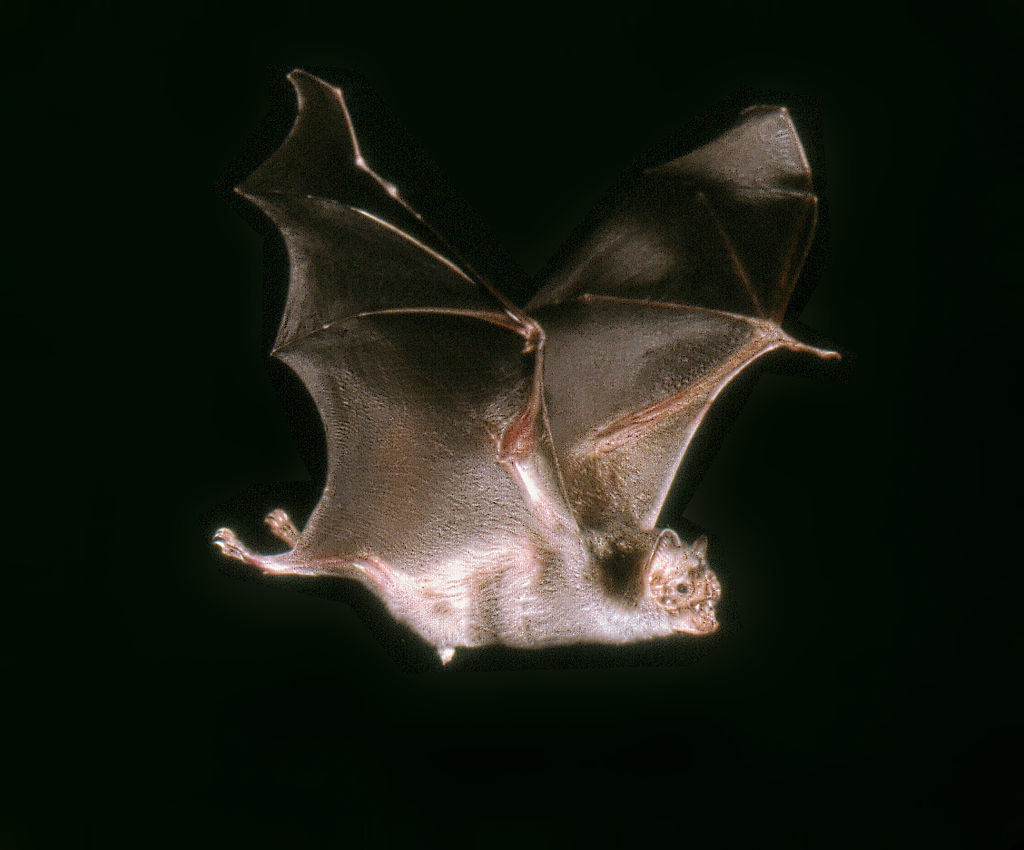
What do Vampire Bats look like?
Owning their name, Vampire Bats resemble Vampires a lot! They have short, cone-shaped muzzles and pointy ears. The muzzle refers to the nose and mouth of the bat. Their wings are actually webbed forelimbs modified for flying.
The fur of Vampire Bats varies in color, from golden or reddish-brown to darker grays. They also have incredibly sharp front teeth, which they use for cutting and drawing blood, while their back teeth are smaller. Their teeth are so sharp that sometimes even handling their skulls in museums can lead to cuts!
How big do Vampire Bats get?
When you think of Vampire Bats, you may imagine giant, scary bats. But they are tiny! A Vampire Bat’s size is about 3.5 inches – only slightly longer than your middle finger. They have an approximate wingspan of 7 inches.
They weigh less than other bat species, too, at about 2 ounces. Males are usually smaller and lighter than females. Some Vampire Bats can even double their body weight in a single feeding! Talk about over-eating!
Where do Vampire Bats live?
Vampire Bats live in colonies, with populations from a dozen to hundreds! They prefer dark and damp places, such as caves, tree hollows, wells, and abandoned buildings. These sites are called a bat’s roost.
Vampire Bats are native to the Americas and are commonly found in Central and South America. They live in a variety of climates, from arid to humid, tropical, and subtropical. Their colonies can be seen from Mexico to Brazil, all the way to Chile and Argentina.
What do Vampire Bats eat?
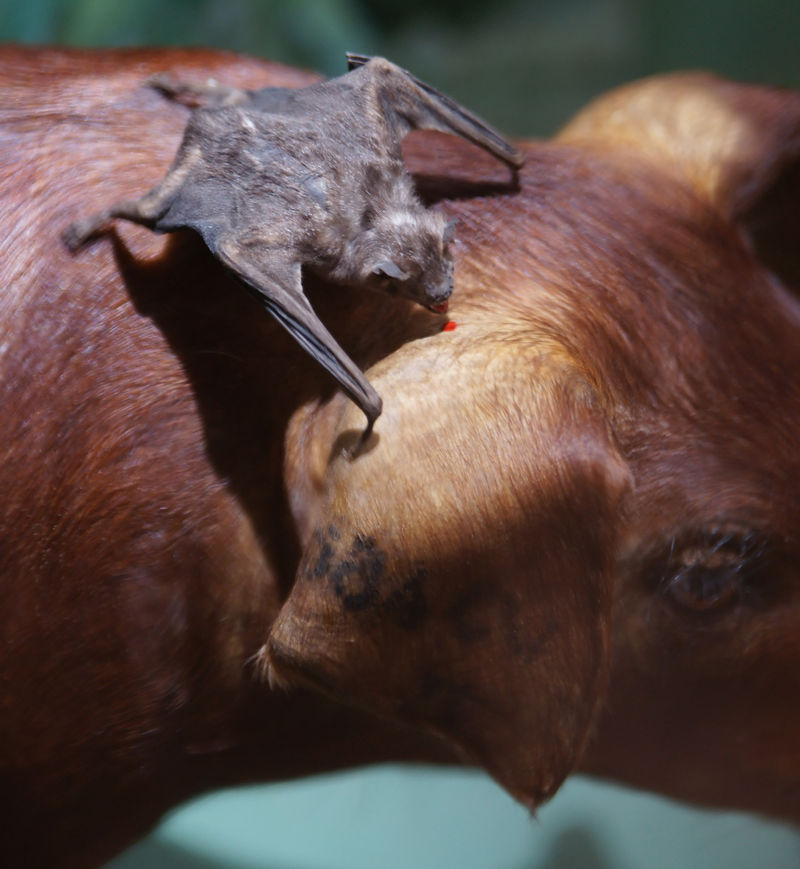
Vampire Bats are nocturnal. This means they are most active at nighttime and hunt only when it’s fully dark outside. Vampire Bats feed on the blood of mammals like cows, sheep, pigs, and horses, and even birds. These animals tend to sleep out in the open, making them easy prey.
For this reason, Vampire Bats are known as sanguivores. But unlike Vampires, these bats first make a small cut into their prey using their front teeth and leap back to check if the host is still sleeping. Then they lap up the blood with their tongues.
Do Vampire Bats drink human blood?
You might be worried about Vampire Bats swooping down in the middle of the night and drinking human blood. And while Vampire Bats have been known to occasionally feed on humans, it is a rare occurrence!
On the few occasions they do end up biting humans, Vampire Bats can spread rabies. The risk of infection is low since only 0.5% of bats carry rabies. Still, if you ever suspect you’ve been bitten by a Vampire Bat, it is crucial to report it to a doctor and get treated for rabies!
Anatomy of a Vampire Bat
Strong Limbs to walk, run and hop
Unlike other bat species, Vampire Bats can use their strong limbs to walk, run, and jump, which helps them attach to their prey. They have a unique way of walking, which looks almost like skipping. But instead of their hind legs, they use their forelimbs to generate thrust since their wings are more powerful than their legs.
Vampire Bat teeth and saliva
Vampire Bats have very few teeth owing to their liquid diet. But these teeth are all needle-sharp, especially the front incisors! They use their upper incisors for making cuts into their prey before feeding. These cuts are usually 7 millimeters wide and 8 millimeters deep.
Vampire Bats’ upper incisors lack a protective enamel, making them even sharper. Sometimes, a host mammal might have fur on its skin. In this case, the bats use their canines and cheek teeth to shave off the hairs, like a barber!
When you accidentally cut yourself, the bleeding usually stops after a while. This is because your blood starts clumping up in a process called clotting. However, Vampire Bat’s saliva contains chemicals that prevent blood from clotting, allowing them to feed for longer!
The only flying mammals
Bats are the only mammals that can fly! Some mammals use modified limbs to glide, such as the flying squirrel. But bats fly as if they’re swimming by pushing their wings down and backwards.
Their wings are actually specialized hands, with elongated fingers connected by a thin and delicate membrane called a patagium. As bat wings have more bones than bird wings, bats are even more equipped for changing directions in the air.
Fine-tuned senses and echolocation
You may have heard the phrase ‘blind as a bat’! But contrary to myths, bats have small eyes even more sensitive than humans! This helps them see in pitch dark conditions. However, they cannot see in color and only view the world in black and white. Bats also use their ears to ‘see’ things even their eyes can’t sense! This is called echolocation.
When a bat flies, it makes high-pitched sounds which our ears can’t hear. When these sound waves hit an object, like prey, they bounce back to the bat’s ears like an echo. The bat has special structures in its brain, which helps it understand these echoes. Bats can sense direction and distance, and even the speed at which prey is moving using echolocation!
Vampire Bats also have particular organs on their nose called thermoreceptors. They use these to locate areas on a host where blood flows close to the skin. Vampire Bats can also find and identify prey from the sounds of their breathing and return to feed on the same animal night after night!
Vampire Bat skeleton
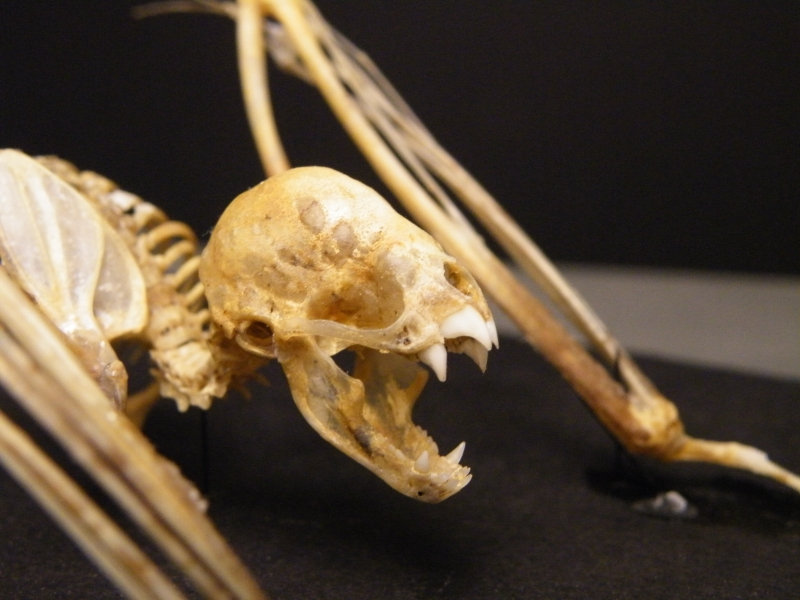
We can see a Vampire Bat’s skeleton in this image, especially their really sharp ‘fangs’!
Vampire Bat Scientific Name and Classification
Vampire Bats belong to the subfamily Desmodontinae. They are leaf-nosed bats belonging to the family Phyllostomidae. They fall under the order Chiroptera, which literally means ‘hand-wings’!
There are 3 living species of Vampire Bats. These are Desmodus rotundus (Common Vampire Bat), Diphylla ecaudata (Hairy-Legged Vampire Bat), and Diaemus youngi (White-Winged Vampire Bat).
Three Types of Vampire Bats
Common Vampire Bat
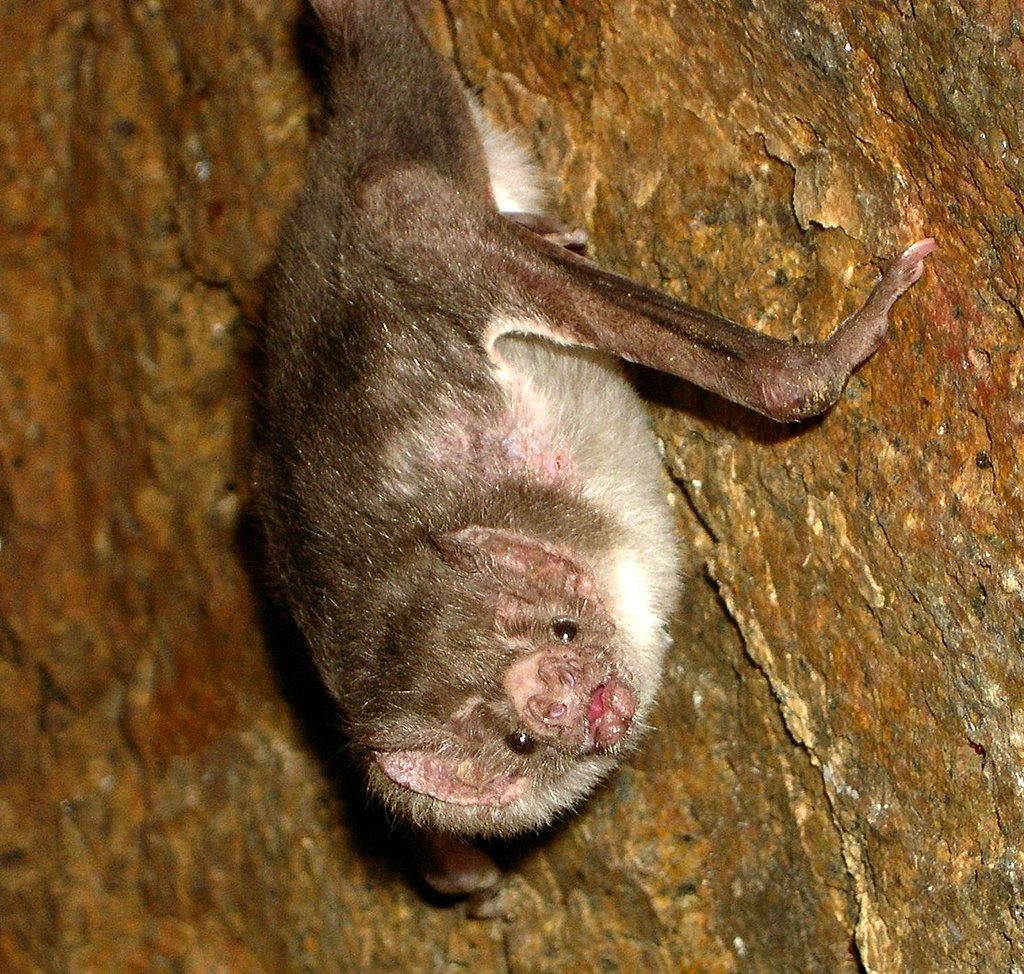
Common Vampire Bats are the most abundant and well-known Vampire Bats. They feed mainly on mammals such as livestock. They occur from northern Mexico, southward through Central and South America, to Uruguay, northern Argentina, central Chile, and Trinidad. They can be distinguished by their long thumbs.
Hairy-Legged Vampire Bat
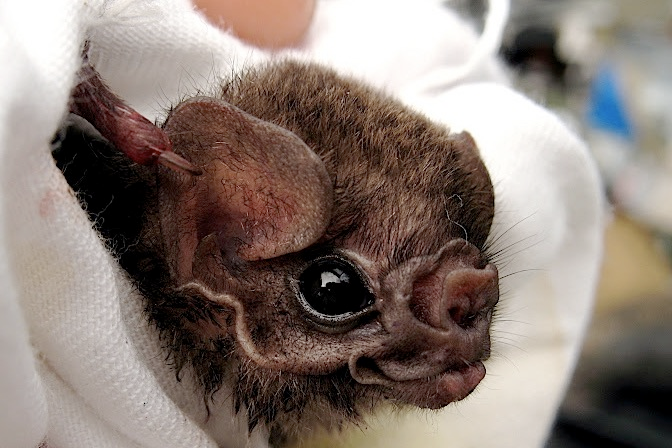
Hairy-Legged Vampire Bats are mainly found in tropical and subtropical forests of Central and South America and southern Mexico. They feed primarily on the blood of wild birds, but some colonies can feed on domestic birds and even humans! They have two recognized subspecies.
White-Winged Vampire Bat
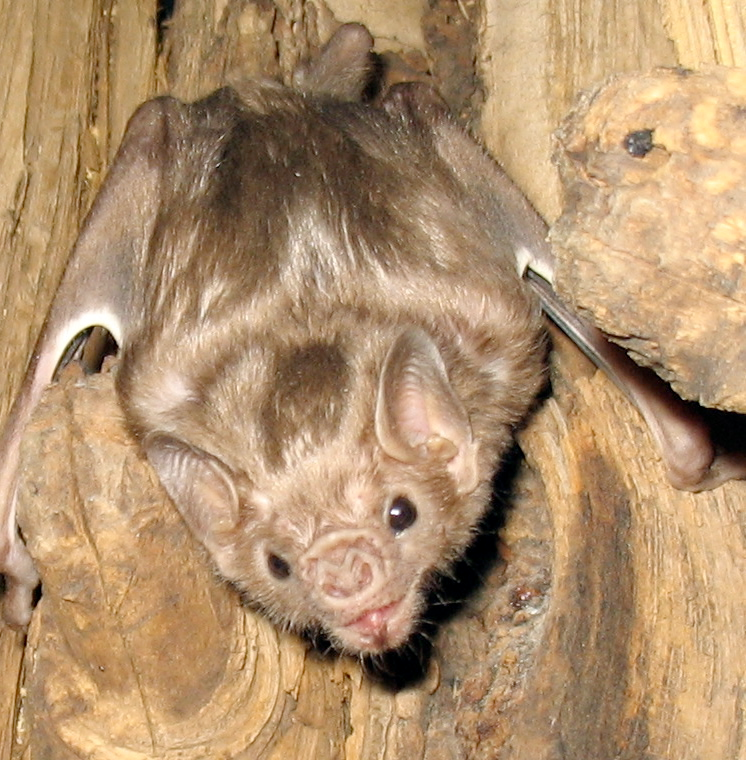
White-Winged Vampire Bats live from Mexico to southern Argentina and on the islands of Trinidad and Isla Margarita. They also feed mainly on the blood of birds. It is the only bat species in the world with 22 teeth – the other Vampire Bats have only 20. They also have scent glands in their mouths for releasing foul smells and escaping from predators.
Behavior of Vampire Bats
Colony Dwellers
Vampire bats live in groups called colonies, which can sometimes have more than 1000 members. They also exhibit social behavior. If a Vampire Bat goes without feeding for two nights in a row, it can die. That’s why Vampire Bats have developed a unique food sharing system. Well-fed vampire bats will often spit up blood to share it with other bats they’re related to.
This behavior is commonly seen between related females, especially with new moms. Some mothers get treated to excess blood this way for up to two weeks after giving birth! This sharing of blood is often done in return for grooming. It’s like going to the salon and paying with blood!
Sleeping Upside Down
Like all other bat species, Vampire Bats also sleep upside down. Like we saw above, bat wings are very different from bird wings. Birds can use their wings to keep flying in the air and lift off from the ground by flapping them rapidly.
However, while Vampire Bats can maintain flight and even run awkwardly, their wings lack enough strength to launch them into the air in the first place! To counter this, bats have evolved not to take off but to fall down.
Vampire Bats use their claws to climb tree trunks or cave walls and then drop down before using their wings to glide away. A height of a few feet is enough for them to achieve this. But what about when bats have to sleep during the day? If they slept on the ground during the day, they would become easy prey for a predator since they wouldn’t be able to fly away.
That’s why bats also find a high spot to hang down from before napping. Their hind legs are also helpful in this scenario. They have unique tendons which allow their feet to hang even when they’re completely relaxed – something birds can’t do!
Night Owls
Vampire Bats hunt only during the night. This has several causes. For one, this way, they can evade other predators. They’re also better able to catch their prey sleeping and suck their blood without letting them know. A typical female vampire can consume over 1 fluid ounce of blood in a 20-minute feed without the prey even waking up!
Reproduction in Vampire Bats
Baby Vampire Bat
Vampire Bats mate all year round and have a long gestation period of 3 to 4 months. Since flying takes a lot of energy, female Vampire Bats give birth to a single baby at a time. These baby bats, or pups, feed not on blood but on the mother’s milk for 3 to 5 months. They do not even reach their full adult weight for roughly a year!
Adopting Offspring
Female Vampire Bats are very caring mothers! They are the only bat species known to adopt and nurse young orphans in their colonies. While this behavior is typically shown for related pups, there have been cases where mothers care for unrelated babies. This is why their colonies are called ‘maternal’ colonies.
Threats to Vampire Bats
All three species of Vampire Bats are classified as ‘least concern.’ This means they are in no danger of going extinct since they have large stable populations in various habitats. But they can still experience local threats.
They are a pest to farmers, as they can spread rabies, and their bites can get infected and even kill cattle. For this, many farmers often employ ways to kill them and can destroy their roosting sites. Other threatened species of bats may also suffer because of being mistaken for Vampire Bats.
Amazing Facts about Vampire Bats
- Vampire Bats can live up to 12 years on average, and even 20 years in captivity!
- Vampire Bats have superfast digestion, so they can fly away quickly after feeding!
- The saliva of Vampire Bats is also being used to make blood-thinning medicines for stroke patients!
- Vampire Bats are actually spotless, owing to the grooming services they provide each other!
- Vampire Bats were actually named after Vampires – not the other way!
